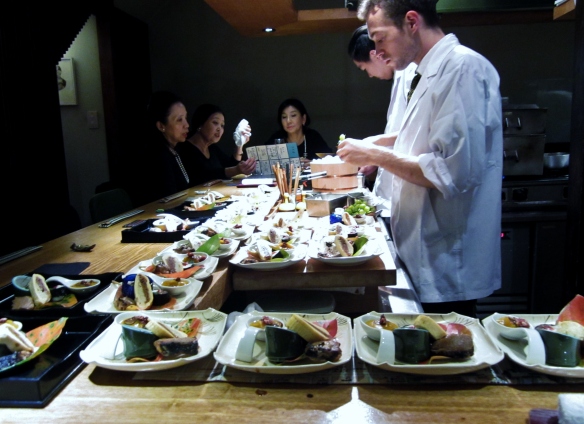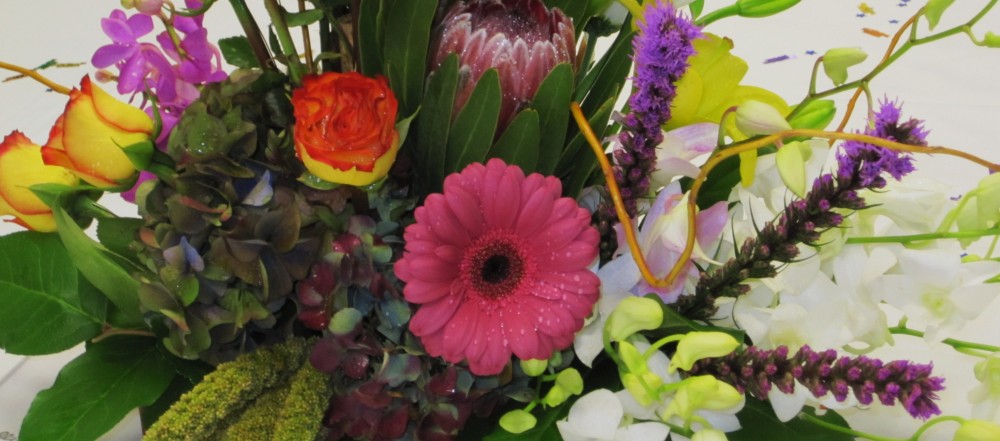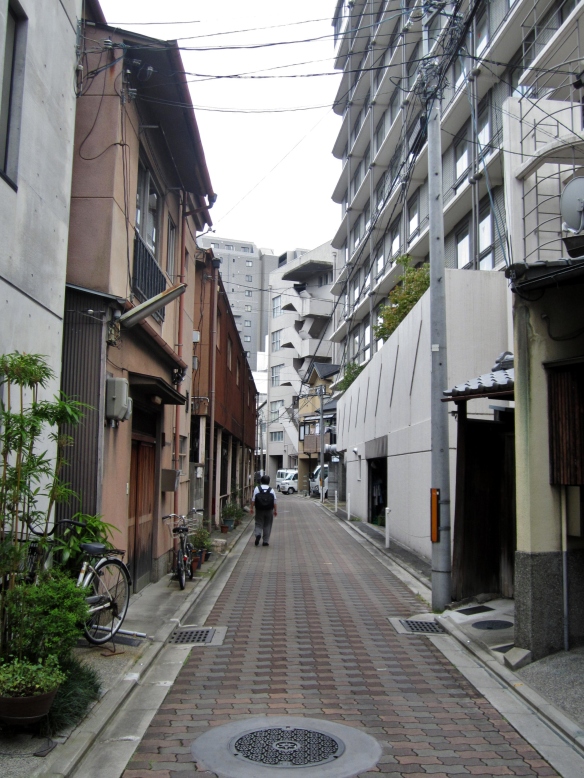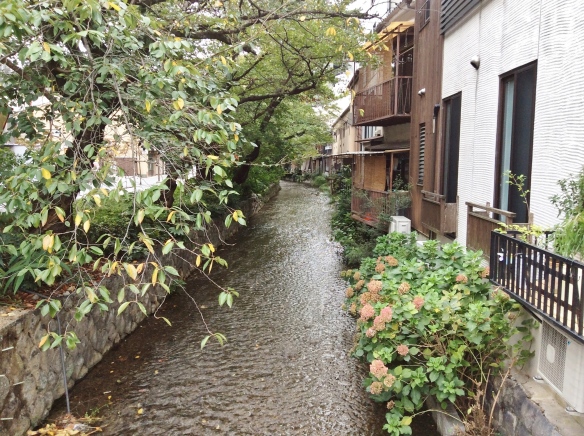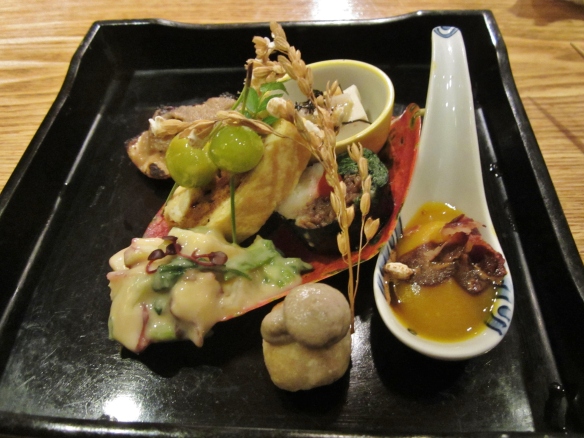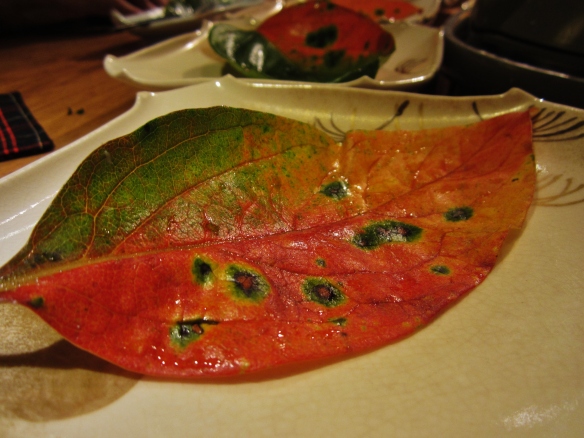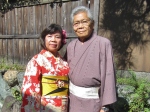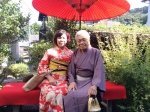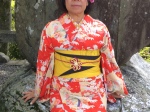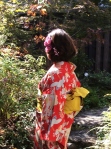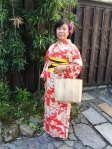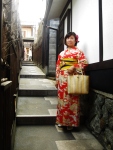A MUST DO on my list while in Japan is to rent Kimono and walk the streets in style. I originally planned to do it while in Tokyo in Asakusa, but plans got changed due to typhoon expected to hit Tokyo. I do believe things happened for good reasons, for renting in Kyoto turned out better. We were allowed longer time to keep our Kimono, and options to return it to the shop the next day or get picked up from our hotel.
A bit of information about Kimono.
Kimono is a traditional Japanese garment. It is a T-shaped, straight-lined robes worn so that the hem falls to the ankle, with attached collars and long, wide sleeves. Kimono is wrapped around the body, always with the left side over the right (except when dressing the dead for burial) and secured by a sash called obi, which is tied at the back. Kimonos are generally worn with traditional footwear (especially zōri or geta) and split-toe socks, tabi.
Kimonos are available in silk for special or formal occasions, but in the summertime the Japanese like to relax in comfortable, cotton kimonos called Yukata. Cotton kimonos were traditionally worn after taking a long, hot bath, but they are also worn during the summer, to feel cool on a hot day. Both young and old Japanese people enjoy dressing up in them to take in the local “Matsuri”, one of the many festivals that celebrates special days or events during the summer months.
Now a days Kimono is worn only on special occasions such as weddings, tea ceremonies, formal traditional events. Depending on occasion, age and marital status, the appropriate style and colors are worn. Men’s kimono usually are more subdued in colors, and typically from matte fabrics. Women’s kimono, in contrast, is made of silk (also polyester) with beautiful designs made with embroidery, painting and dyeing making them art pieces as much as they are garments.
Armed with map and directions, we took the bus to find our way to Okimoto Kimono Rental shop near Kiyuzumidera temple. As usual, we struggled finding the shop, and solicited lots of help. TIP: Bring a map with names of attractions translated or written in Japanese character, this way even if you can’t communicate you just point on the map where you want to go; and with help of body language you’ll eventually find your way.
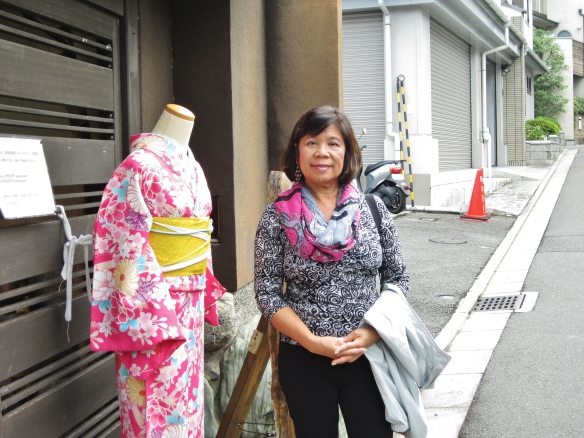
Okiwoto Kimono Rental, one of their 2 shops located near Kiyomizu temple.
I recommend making an early appointment, even better be the 1st appointment. I’m glad we did for just a bit later people started arriving and quickly filled the shop, which is quite small.
The shop has several rows of fabric in different colors, materials made of silk and polyester, embroidered or painted designs. After choosing the main fabric, you choose other parts of your ensemble such as collar, sash or obi, c hair pieces & handbags. It was overwhelming finding the right one. Rental price depends on your choice of fabric, and whether you want make-up and your hair-styled. Hair pieces rent for $3 US, but handbags and socks (you keep) and slippers included. Visit their website for pricing and options.
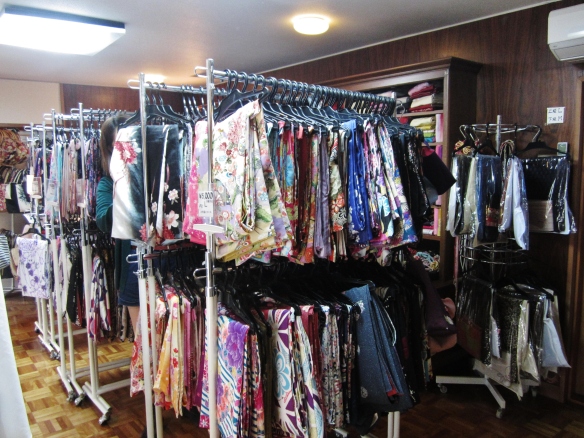
The shop has a wide selection of fabrics, designs and colors.
We removed our shoes before entering, then handed separate bags to store our street clothes, shoes and other belongings. On 2nd floor are separate dressing rooms for men and women, and a large mirror. BTW, no pictures are allowed at this point.
I did not realize a Kimono took many layers of fabrics to complete the whole ensemble and requires special skills or techniques to do it right. The lady suggested I go use the bathroom before my fitting for obvious reason. There were only two of us in the dressing room so it took quicker, about 15-20 min to get me fitted. I’m sure with a big crowd waiting, the process would have taken longer. The whole process (fabric selection, fitting & hair style) takes from 1 1/2 to 2 hours, but I was ready in an hour and even shorter for my husband. Definitely helpful and saves a lot of time, if you checked the website and get some idea on what colors and designs you prefer (based on some photos) before arriving at the shop.
I chose a fabric that was bright orange and a complimentary color (yellow) for obi. Well, what do you think? Did I make the right choice?
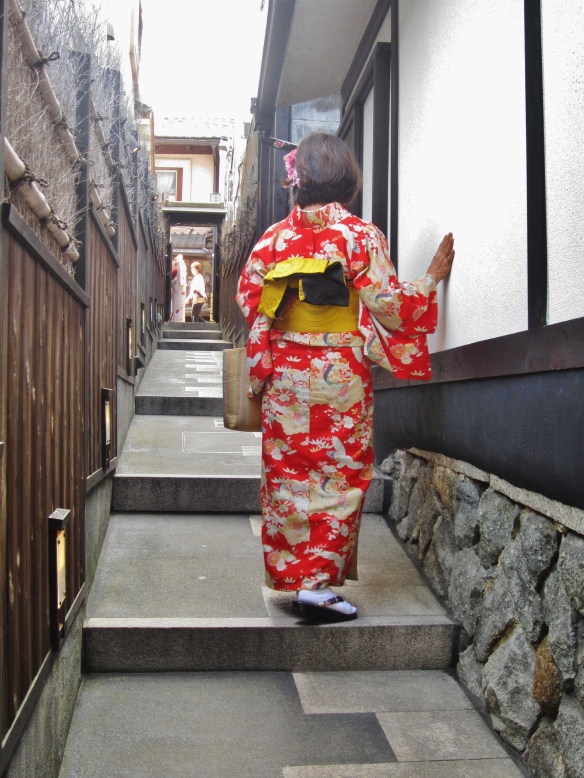

The shop has a small garden that provides a nice backdrop for us to

The shop takes CASH ONLY, and paid about $125 US for the two of us. Rental cost depends on the fabric & accessories and whether you want make-up and hair style included. Handbag, slippers and socks (we got to keep) were included. Hair pieces added $3 to rent, and must be returned. When we first entered, they gave us separate bags to put our street clothes, shoes, purse and any personal belongings. On our way out, they tagged the bags with our names for storage and reminded us to be back by 5:30pm.
The rental shop has another branch, The Main Shop, which has a studio if you prefer to have a professional photographer take your pictures. We opted to do it, and the pro shoot about twelve pictures. For $25 US we chose two photos placed on a hardcover souvenir. However, we liked more the photos we shoot ourselves, in and around the small garden at this place (the other branch does not have a garden for photo-taking opportunities. In fact, I did not even include any of the studio shot on this blog. My advice skipped the studio.
I wanted to take advantage of our special outfit and we posed and took as many pictures as possible. See the gallery.
What better way to experience this Japanese culture and tradition? In fact, we saw more locals than tourists partaking of this amazing opportunity.
